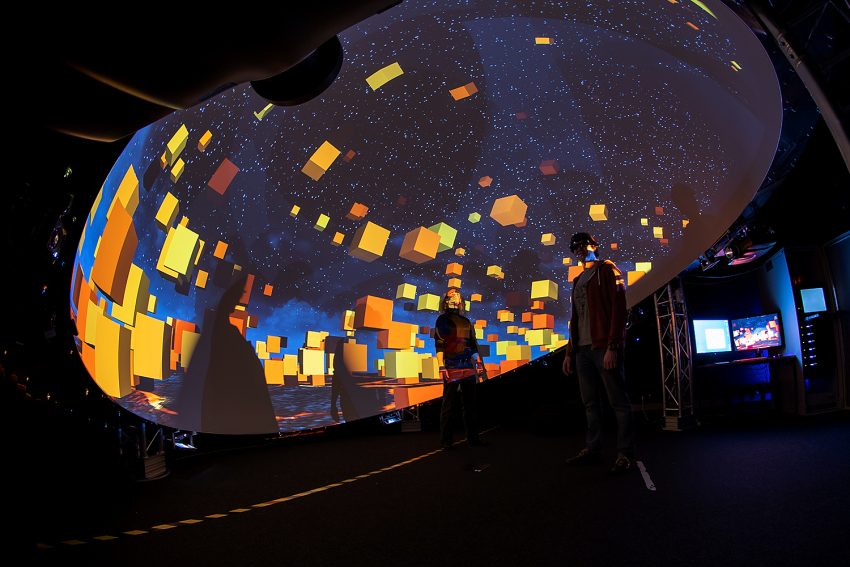Picture of the Month: A Dome Full of Pixels From the Computer Graphics Lab
A sky filled not with stars, but with orange cubes – this is what our Picture of the Month January resembles at first glance. In reality, however, it shows the interior of the ICG Dome, a five-meter hemisphere equipped with projectors at the Computer Graphics Lab (ICG) of the TU Braunschweig. The projection dome is located in a specially equipped room on the North Campus.

Scientists from the Computer Graphics Lab use the ICG Dome, a large projection dome on the North Campus, to explore visual perception. Picture credit: Max Fuhrmann/TU Braunschweig
Like a large dome-shaped tent, the projection surface of the ICG Dome extends from floor to ceiling. Six video projectors are mounted on the perimeter and project more than 20 million pixels onto the surface. In addition, the dome is equipped with a real-time motion detection and eye-tracking system. This allows researchers at the Computer Graphics Lab to study the human visual system for various virtual reality (VR) applications.
Exploring visual perception with the Dome
In doing so, they have to consider two different forms of vision. If we fixate a word in a text with our eyes, that term appears sharp, while the text around it appears blurry. This distinguishes foveal from peripheral vision. In foveal vision, we look straight ahead, directly at the perceived object. Peripheral vision is what we perceive from the “corner of the eye,” that is, everything outside the fixed point.
This difference in vision is important for various technologies, including so-called head-mounted displays such as VR goggles. These are devices worn on the head that project images either onto a screen near the eye or directly onto the retina. In such applications, computer graphics algorithms must simultaneously take into account consciously perceived foveal vision and also the peripheral field of view, which is usually perceived subconsciously.
The scientists are using the ICG Dome, among other things, to investigate how to optimally achieve this. Compared to current VR goggles, it has a significantly higher resolution. As a result, the algorithms can be developed for current, but also for future devices.
Using 3D glasses and a suit equipped with sensors, the researchers can track the gaze and movements of people located under the projection dome. In this way, they are investigating how to improve the perceived visual quality in VR applications, reduce computation time, and influence the perception of in-situ atmosphere. At the same time, they can explore scenarios for VR environments where multiple people interact with each other.
